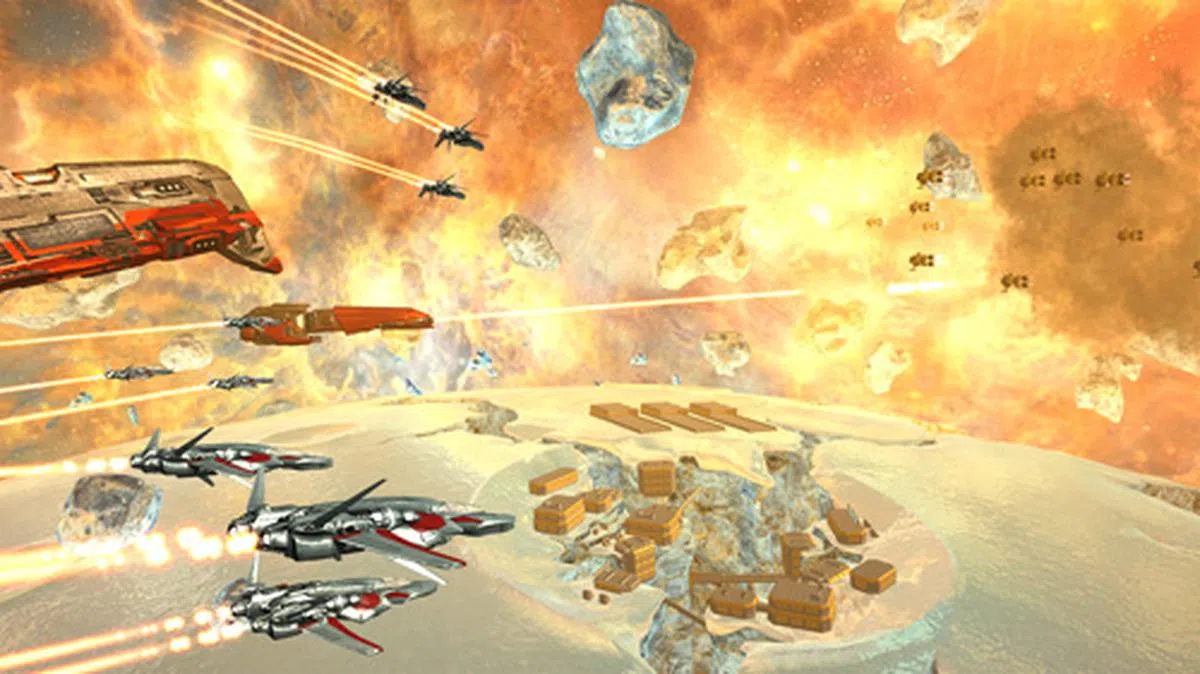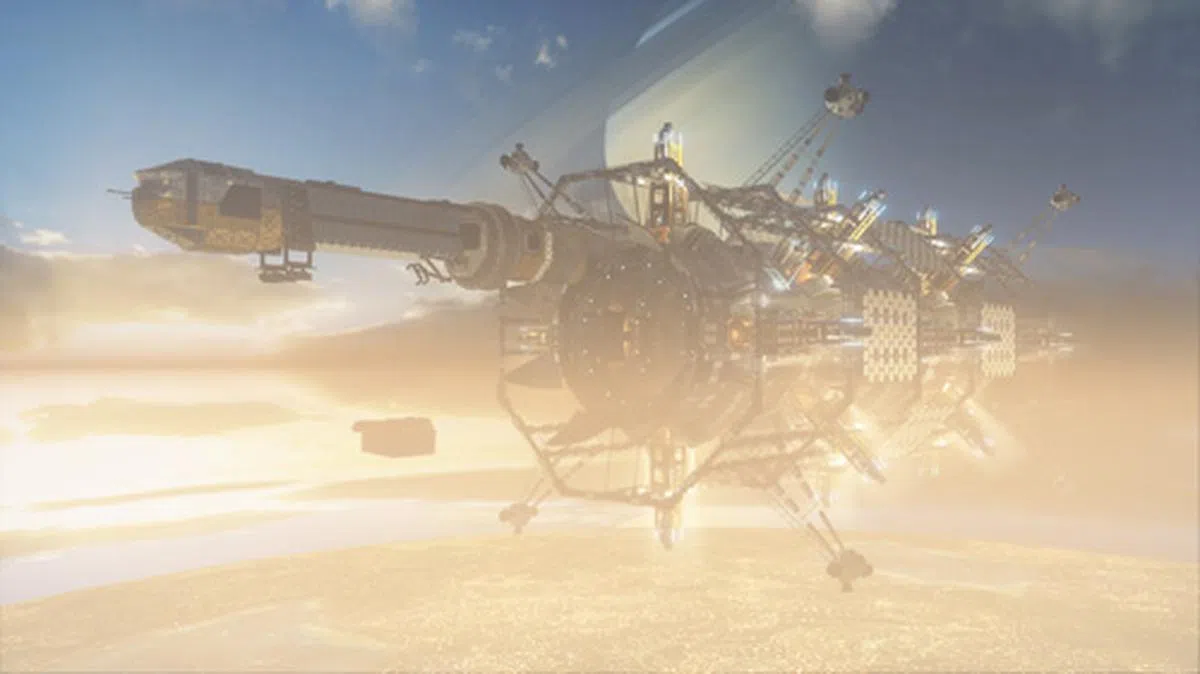3DMark Fire Strike - Desktop GPU Performance Review
Futuremark's popular synthetic graphics benchmarking tool, 3DMark, has been updated to a brand new cross-platform version. We put a range of graphics cards through its toughest tests, Fire Strike and Fire Strike Extreme, to see how they fare on Futuremark's most ambitious and technical benchmark to date.
Meet The New 3DMark
Futuremark's popular synthetic graphics benchmarking tool, 3DMark, has been updated to a brand new cross-platform version. The currently released edition only runs on Windows OS, however, future updates will include versions for iOS, Android and Windows RT.
Unlike previous versions of 3DMark, the new 3DMark consists of three individual performance tests, Ice Storm, Cloud Gate and Fire Strike, each designed with a specific platform in mind.
Ice Storm
Ice Storm is designed for smartphones, mobile devices and ARM architecture computers. It simulates mobile and entry-level gaming settings through two graphics tests. The first of which is vertex shader heavy and has a generous amount of shadow rendering, while the second test is pixel shader heavy and includes particles and light post-processing effects. Both tests utilize a DirectX 11 engine but is limited to Direct3D feature level 9 (which is the equivalent to a DirectX 9 engine). The iOS and Android versions will use OpenGL ES 2.0. Check out how the full length demo of this test in a YouTube video clip. | |
Cloud Gate
Cloud Gate is designed for integrated graphics processors, mobile discrete GPUs and entry-level dektop graphics cards. It utilizes a DirectX 11 engine limited to Direct3D feature level 10 (equivalent to DirectX 10) with a heavy emphasis ongeometry, heavy post processing, particle effects, and volumetric illumination. Check out how the full length demo of this test in a YouTube video clip. | |
Fire Strike and Fire Strike Extreme
Fire Strike is designed for enthusiast-level graphics cards and dual-GPU setups and is Futuremark's most ambitious and technical benchmark to date. It serves as a showcase for DirectX 11 features, utilizing a grueling two-part test with extreme levels oftessellation and volumetric illumination, as well as complex smoke simulation using compute shaders and dynamic particle illumination. Fire Strike Extreme is a ramped up version of Fire Strike with more tessellation, more particle effects and more taxing DirectCompute calculations. Check out how the full length demo of this test in a YouTube video clip. |
Desktop GPU Performance Review
To put the new 3DMark to the test, we'll first be testing its Fire Strike and Fire Strike Extreme benchmarks with a selected a range of desktop graphics cards. From our assessment, the Fire Strike test is most suited for testing most discrete desktop graphics cards. With that said, stay tuned for a Cloud Gate performance review coming soon where we asses some notebooks with mobile GPUs, and an Ice Storm performance review when Futuremark releases its iOS, Android and Windows RT supported versions.
For this test, we'll be using our 2013 test rig with the following specifications:
- Intel Core i7-3960X (3.3GHz)
- ASUS P9X79 Pro (Intel X79 chipset) Motherboard
- 4 x 2GB DDR3-1600 G.Skill Ripjaws Memory
- Seagate 7200.10 200GB SATA hard drive (OS)
- Western Digital Caviar Black 7200 RPM 1TB SATA hard drive (Benchmarks + Games)
- Windows 7 Ultimate 64-bit
The list of cards tested:
- AMD Radeon HD 7970 GHz Edition 3GB GDDR5 (AMD Catalyst 13.1)
- AMD Radeon HD 7870 2GB GDDR5 (AMD Catalyst 13.1)
- AMD Radeon HD 7770 2GB GDDR5 (AMD Catalyst 13.1)
- NVIDIA GeForce GTX 680 2GB GDDR5 (ForceWare 310.90)
- NVIDIA GeForce GTX 670 2GB GDDR5 (ForceWare 310.90)
- NVIDIA GeForce GTX 660Ti 2GB GDDR5 (ForceWare 310.90)
- NVIDIA GeForce GTX 660 2GB GDDR5 (ForceWare 310.90)
- NVIDIA GeForce GTX 650Ti 1GB GDDR5 (ForceWare 310.90)
N.B. We wanted to include the dual-GPU GeForce GTX 690 in this test, however, we had issues during the testing process and, as such, it has been dropped for now. We suspect the issue to be compatibility with the new 3DMark and NVIDIA's most current SLI drivers.
Results
AMD's Radeon HD 7970 GHz Edition was the big winner at both Fire Strike and Fire Strike Extreme, outperforming NVIDIA's GeForce GTX 680 by about 16% at both settings. We suspect the reason it performed so well is due to the Radeon HD 7970 being able to fully utilize its more powerful hardware in Fire Strike's high level of graphical complexity. Plus, the extra 1GB of graphics memory and its wider memory bus helps as well.
Do note, however, that no game today requires the same amount of power utilized in Fire Strike and Fire Strike Extreme, and as such, the HD 7970 GHz Edition won't display such a huge lead over the NVIDIA GeForce GTX 680 in most games. If we take a look at our recent head-to-head matchup, you can see this to be the case, where both cards performed fairly evenly. However, you'll also notice that on the more taxing games, such as Hitman: Absolution, the HD 7970 GHz Edition is already starting to pull away.
We should also note that even the Radeon HD 7970 GHz Edition struggled at Fire Strike Extreme. Frame rates were consistently below 30, which should tell you just how punishing this test is.
Further down the chart, NVIDIA's GTX 660 Ti matched up quite well with AMD's Radeon HD 7870, both posting a similar level of performance. At the true mid-level range of performance, AMD's Radeon HD 7770 scored similarly to NVIDIA's GeForce GTX 650 Ti at Fire Strike, but scored more than twice as well on Extreme - this mirrors what we saw at the enthusiast-level with the HD 7770's much more powerful hardware simply outgunning the comparatively weak GTX 650 Ti.

Conclusion
The new 3DMark's Fire Strike and Fire Strike Extreme benchmarks showcase the capabilities of a card by pushing it to its absolute limit. In this respect, they're useful tools for seeing the full hardware potential of a card and overclockers will certainly be keen to push for higher and higher scores.
Having said that, the results should be taken with a pinch of salt, as they're not the best indicator of in-game performance - at least with regards to current gaming titles. This is simply because no games today even come close to the level of graphical complexity seen in Fire Strike. Of course, a high score on Fire Strike could be an indicator of better future gaming compatibility as games get closer and closer to reaching Fire Strike's level of quality.
Stay tuned for our next feature, where we'll be testing 3DMark's Cloud Gate benchmark on mobile discrete GPUs and integrated graphics processors. In future, we'll also take a look at the Ice Storm benchmark after Futuremark releases its iOS, Android and Windows RT supported versions.
Our articles may contain affiliate links. If you buy through these links, we may earn a small commission.


